GORGEOUS THINGS TO SEE IN JAPAN
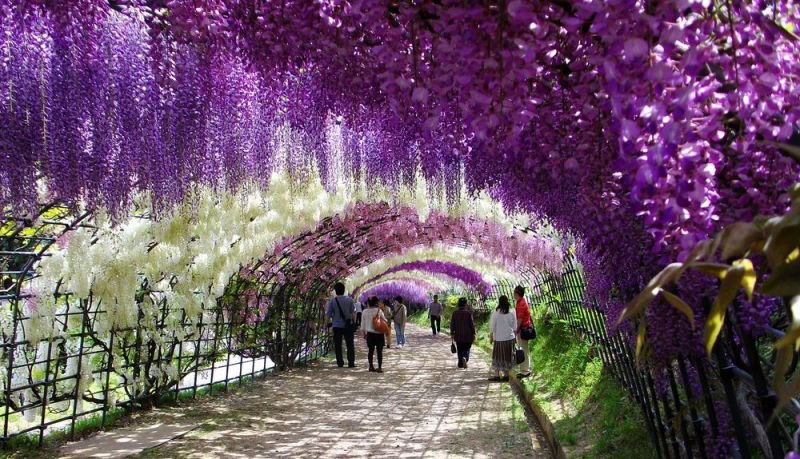
The wisteria tunnel is located inside Kawachi Fuji Gardens in Kitakyushu, Japan (5 hours from Tokyo), the garden features 150 wisteria plants from 20 different species but the tunnel itself is the crown jewel.
Kawachi Wisteria Garden is a private garden in the wooded hills south of central Kitakyushu, famous for its spectacularly presented, large numbers of wisteria flowers. The garden is opened to the public seasonally during the wisteria season which usually peaks around late April to mid May and during the maple leaf season in autumn.
Takeda Castle, Asago, Hyogo Prefecture
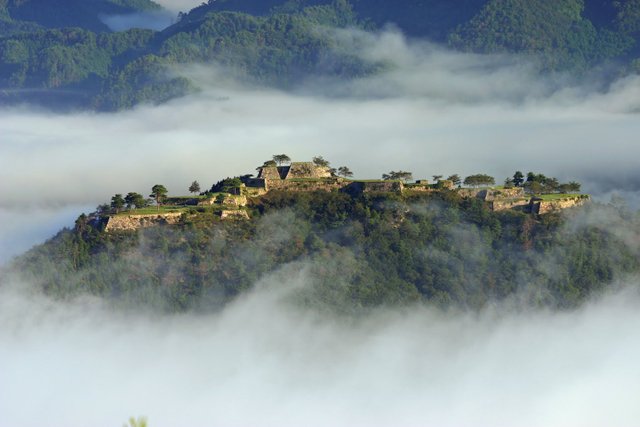
Takeda Castle is a ruined castle in the city of Asago, in the northern part of Hyōgo Prefecture, Japan
The Takeda Castle, constructed on a mountain at 353 meters of altitude, is one of the top hundred famous castles in Japan.
In autumn when the sky is clear, fog can be seen early in the morning. The view is such that the castle can be seen surrounded by a sea of clouds, thus resembling a castle floating in the sky.
Takeda Castle was first built as Izushi Castle in 1441 by Otagaki Mitsukage, but was abandoned after the great samurai Battle of Sekigahara in 1600, when the last lord of the castle was accused of arson and forced to commit seppuku (ritual suicide).
Unfortunately the original castle is no longer standing but an extensive set of ruins remain to be explored.t is very reminiscent of the famous Hayao Miyazaki movie “Castle in the Sky” and hence the nickname.
Meoto Iwa, Mie Prefecture

Meoto Iwa, or the Married Couple Rocks, are a couple of small rocky stacks in the sea off Futami, Mie, Japan. They are joined by a shimenawa and are considered sacred by worshippers at the neighboring Futami Okitama Shrine.
Less than 700 meters offshore from the village of Futamigaura just south of Ise are the two symbolic and sacred rocks known as the Meoto Iwa. Meoto means couple. The larger rock, named Izanagi, is the husband, standing nine meters tall and with a girth of about 40 meters. Izanagi has a small Shinto torii gate To his right is the three point six meter high “wife”, Izanami, which is about nine meters round. Being married, they are joined by the distinctive sacred ropes particular to Shinto shrines and holy places, made of braided rice stalks called Shimenawa. The ropes biding the two rocks weigh almost a ton, and are replaced in a special ceremony held three times a year, in May, September and December. The rope changing ceremonies are deemed important enough to make the news each time. According to Shinto legend, the islands in the Japanese archipelago were born of this couple.
Sagano Bamboo Forest, Arashiyama, Kyoto Prefecture
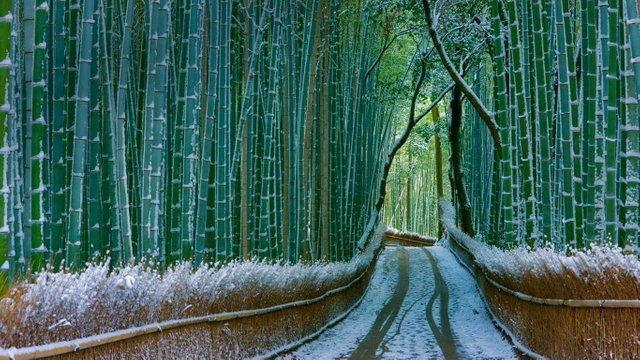
Arashiyama is a district on the western outskirts of Kyoto, Japan. It also refers to the mountain across the Ōi River, which forms a backdrop to the district. Arashiyama is a nationally designated Historic Site and Place of Scenic Beauty.
it’s one of the most photographed sights in the city. But no picture can capture the feeling of standing in the midst of this sprawling bamboo grove – the whole thing has a palpable sense of otherness that is quite unlike that of any normal forest we know of.
You can access it directly from the main street of Arashiyama, a little to the north of the entrance to Tenryu-ji Temple, but it’s best paired with a visit to that temple (exit the north gate, take a left and you’ll be in the grove in no time). There’s just one main path through the grove, which leads slowly uphill. Once you get to the top of the hill, the entrance to the sublime Okochi-Sanso Villa is right in front of you (go in, you won’t regret it).
Senso-ji Temple, Tokyo
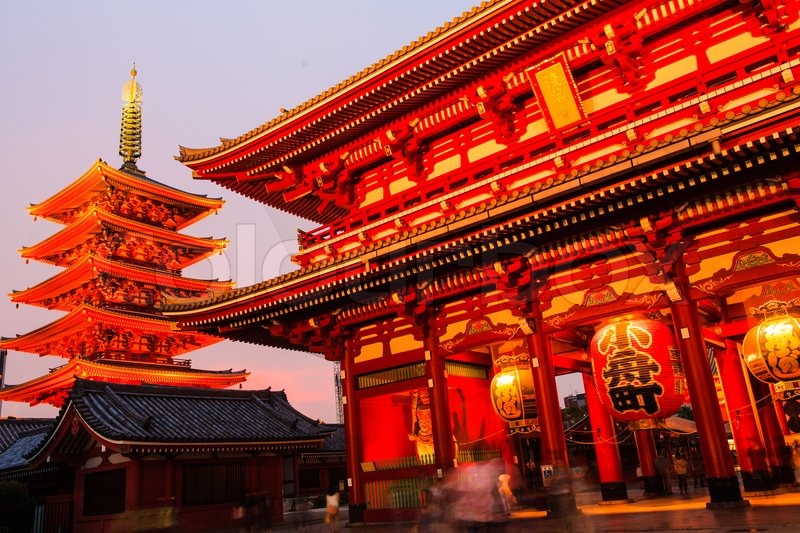
Sensō-ji is an ancient Buddhist temple located in Asakusa, Tokyo, Japan. It is Tokyo's oldest temple, and one of its most significant. Formerly associated with the Tendai sect of Buddhism, it became independent after World War II.
Tokyo’s most visited temple enshrines a golden image of Kannon (the Buddhist goddess of mercy), which, according to legend, was miraculously pulled out of the nearby Sumida-gawa by two fishermen in AD 628. The image has remained on the spot ever since but is never on public display. The present structure dates from 1958. Entrance to the temple complex is via the fantastic, red Kaminari-mon (Thunder Gate) and busy shopping street Nakamise-dōri.
Motonosumi Inari, Yamaguchi Prefecture
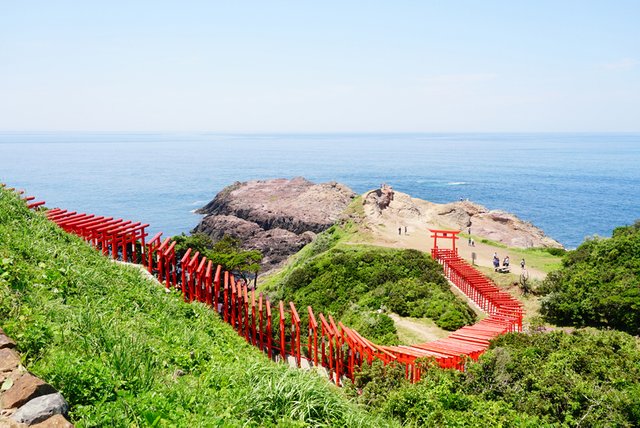
This shrine is very unique and I must see for anybody visiting the Yamaguchi area. It is quite difficult to get to but hopefully this will change if it becomes more popular
After a divine message from the white fox, this shrine was annexed in 1955 from Daikodani Inari Shrine in Tsuwano, Shimane Prefecture.
This shrine is dedicated to prospering businesses, large catches at sea, and maritime safety as well as matchmaking, children, warding off evil spirits and bringing good luck, wealth and happiness, traffic safety, academic achievements, and fulfilling wishes.
There are approximately 40,000 Inari shrines throughout Japan written with the character for load, but these are the only two Inari shrines that are written with the character for achievement.
Lake Kawaguchiko, Yamanashi Prefecture
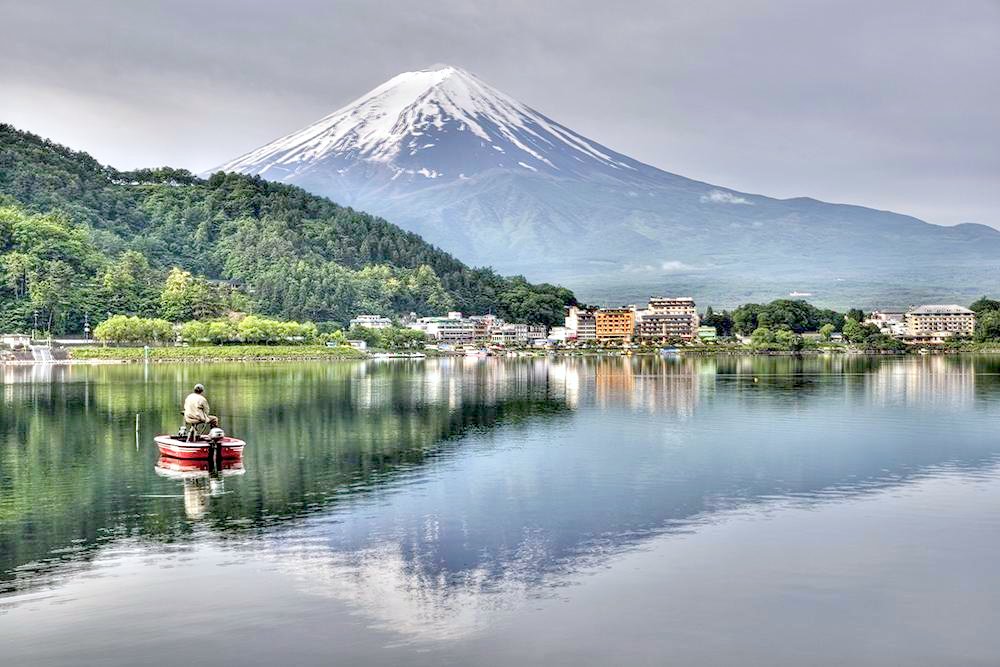
Lake Kawaguchi is located in the border Fujikawaguchiko and Minobu, southern Yamanashi Prefecture near Mount Fuji, Japan. It is the second largest of the Fuji Five Lakes in terms of surface area, and is located at the lowest elevation.
Lake Kawaguchiko is the most easily accessible of the Fuji Five Lakes with train and direct bus connections to Tokyo. A hot spring resort town with various tourist attractions and views of Mount Fuji is located around the lake's eastern end, while the northern and western shores are mostly undeveloped.
The best views of Mount Fuji can be enjoyed from the lake's northern shores and are particularly breathtaking during the cherry blossom season around mid April and the autumn colors around the first half of November. One of the nicest spots for cherry blossoms is the seaside promenade near the Kawaguchiko Music Forest, while photographers will enjoy the "Momiji Tunnel" for autumn colors, a maple tree covered road section along the lake's northern shore.
Great photography you are a friend
Thanks
Great view
This is the number one country I have been desiring to visit. Ancient artistic beauty everywhere if you look for it.
yes ancient and traditional